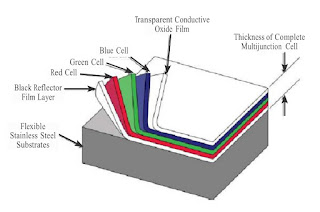Review: Flexopower Atacama 79W
We rarely spend more than two nights in the same location while we travel and have not installed a dual-battery system in our 4Runner. Instead, we have installed a Deka Intimidator AGM Group 31 battery and supplement the battery charge with solar panels. Krista and I have been using solar panels on our extended trips since early 2012 and the system has worked rather well.
Last year we met up with the Flexopower team at Overland Expo West, where they introduced us to their new Atacama 79W solar panel kit. The first thing I noticed was how their 79-watt panel's deployed footprint was significantly smaller than that of the 60-watt Powerfilm panel we had been running. In fact, it produces 32% more power in an 18% smaller footprint.
Specifications
- Rated Output, STC: 79 Watt
- Max Operating Voltage: 19.2 V
- Operating Current: 4.1 A
- Dimension Folded: 11 x 16 x 1.6 in
- Dimension Deployed: 65 x 31 x 0.04 in
- Weight: 6.2 lbs
- Kit Contents: 1 X 79 Watt Solar Panel Foldable, 33 ft Extension Cable, Solar Regulator, Carry Bag, Anderson Grey Connectors
- Price: $559
Our Thoughts
Like our old 60-watt panel, the Atacama 79W utilizes amorphous silicon (a-Si) construction, also known as thin-film silicon, as opposed to the crystalline silicon (c-Si) found in rigid solar panels like the GoalZero Boulder line. Although c-Si panels are less expensive to make, they tend to produce 10-15% less electricity when compared to a-Si panels. This increase in efficiency means you can reposition your a-Si panels less often when trying to track the sun. Flexopower is able to generate more electricity out of a smaller footprint by increasing the number of targeted a-Si layers. Where the Atacama 79W can produce electricity from the red, green, and blue light spectrums, typical a-Si panels only produce in the red and green. This directly correlates to the panel's ability to generate (approximately) 30% more electricity over in a smaller footprint than our old 60-watt panel.
Flexopower is able to generate more electricity out of a smaller footprint by increasing the number of targeted a-Si layers. Where the Atacama 79W can produce electricity from the red, green, and blue light spectrums, typical a-Si panels only produce in the red and green. This directly correlates to the panel's ability to generate (approximately) 30% more electricity over in a smaller footprint than our old 60-watt panel.Included in the kit was a Phocos CA battery controller, which we installed in the rear cargo area, adjacent to our 12-volt Dometic CFX-65DZ fridge. The great thing about this controller is that it prioritizes the demand from the fridge and sends excess power to the battery. This reduces electrical system loss and improves the overall charging efficiency. New (2017) kits are including an updated Phocos controller that is reported to have a remote display!
Conclusion
We have been using the Atacama 79W solar panel kit for nearly a year now and I must say it has worked beautifully. We are increasingly pleased with performance and durability. The panel has been dropped, jumped on, and (accidentally) run over without any issue. I would, without hesitation, recommend the Flexopower Atacama 79W for anyone looking for a reliable solar panel for their backcountry adventures. Ours stays in the back of our 4Runner and is deployed every time we are parked for a few days and need to run our fridge.
Disclosure of Material Connection: I was given the equipment used in this review in consideration for review publication.
Beau Johnston is an engineer, writer, and photographer who is dedicated to proving you can find a balance between work and life. He is the Co-Founder and Publisher of Living Overland, and when he isn't working, you can find him exploring National Parks, fly fishing, and camping with his wife (Krista) and their two dogs.

___________________________
Author
___________________________
If you found this review helpful, please consider using one of the affiliate links below. The price is the same for you, but a small percentage of the purchase price goes to us, which helps keep this site going. Thank you!

